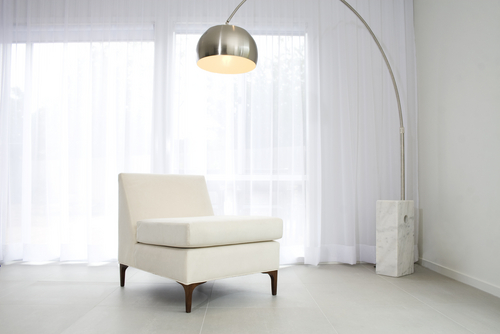Is Inspired by Design a Copyright Infringement?

Different types of copyright protectable works are not exhaustively listed in the Finnish Copyright Act 404/1961. Therefore, the starting point of our copyright legislation is that any creation which is original and independent enough enjoys copyright protection. Consequently, whether the works are a piece of jewelry or home furnishings, copyright protects it if the threshold of originality is exceeded. Naturally, this threshold of originality varies depending on the type of work in question.
Traditionally, the required threshold of originality has been set relatively high for everyday art. A furniture piece, for example, has to be truly creative and thus must have more than just details dictated by practicality, in order to be copyright protected. The Finnish Copyright Council has, however, stated in its decisions that design classics, such as the Eames Lounge Chair by Charles and Ray Eames and the Ball Chair of Eero Aarnio are undoubtedly copyright protected works and thus the manufacturing and distribution of their respective copies requires appropriate licenses.
In Finland, and in most other member states, copyright protection for everyday art, like furniture design, lasts for 70 years from the death of the designer. Thus, the designs of Ludwig Mies van der Rohe (1886 – 1969), such as his famous Barcelona Chair will be copyright protected until 2039 and Arne Jacobsen’s (1902 – 1971) Egg Chair enjoys copyright protection until 2041.
Relationship between copyright protection and design right
Design right is undoubtedly a more traditional form of protection for design and furniture than copyright. The possible design protection, or lack thereof, does not, however, preclude copyright protection. Article 17 of the European Designs Directive 98/71/EC provides that any design protected by a registered design is also eligible for copyright protection from the date the design was created or fixed in any form. Article 17 also states that the extent to which, and the conditions under which, such a protection is conferred, including the level of originality required, shall be determined by each member state. The above shows that there is a cumulative effect between design right and copyright.
Moreover, in the Arco lamp decision C-168/09 the Court of Justice of the European Union (CJEU) ruled that national laws cannot refuse copyright protection to designs created prior to the entry into force of the Designs Directive provided that these are otherwise eligible for copyright protection. This means that even if the design right has fallen into public domain, the design itself can still be copyright protected until 70 years have elapsed from its designer’s death. A member state cannot, therefore, refuse copyright protection to previously design protected works that still meet the requirements for copyright protection. Furthermore, the CJEU stated that a third party who has manufactured or marketed such products based on such ex-design rights can no longer rely on it, and thus copyright protection cannot be suspended for the benefit of such a third party.
Is “inspired by” infringing?
Many replica furniture companies are based in the UK. This is because section 52 of the UK Copyright, Designs and Patents Act 1988 enables UK companies to reproduce design furniture as “replica” or “inspired by” pieces after 25 years from the point when the article was industrially applied. Thus, if a design furniture piece, even though it is copyright protected, is industrially applied and mass produced, its copyright protection will expire significantly earlier in the UK than in most of the other member states.
In its Arco lamp decision C-168/09, the CJEU confirmed extended copyright protection of industrially applied works from 25 years to general protection of 70 years from the author’s year of death, if the design piece meets the requirements for copyright protection. After the Arco lamp decision, the UK government expressed its wish to provide the full term of copyright protection for artistic works, whether created as a one-off or industrially manufactured.
The government passed therefore a law to remove the problematic section 52 in 2014 and it was due to be implemented in April 2020. Although the implementing legislation was suddenly withdrawn in July 2015 and a new public consultation was opened shortly afterwards, and it was reported that section 52 could be repealed as early as the end of April 2016. Some reports suggest that retailers would need to sell existing replica stock within 6 months. There do however remain open questions, most notably in relation to compulsory licensing provisions.

Importing infringing design copies to Finland offends Finnish copyright law
As long as replica furniture is still legal in the UK, is it legal to order such products to another member state in which the original design is still protected by copyright?
The Finnish Copyright Act is quite straightforward stating that anyone who imports into the country, or brings onto the territory of Finland for the transportation to a third country, copies of a work, which he knows or has well founded reason to suspect to have been produced outside the country under such circumstances that such production in Finland would have been punishable under the Copyright Act, commits a copyright violation. Finnish law is thus applied to importing, selling and marketing of any infringing design furniture products in Finland.
Manufacturing of replica products without the right holder’s permission is clearly a copyright infringement under the sections 2 and 56a of the Finnish Copyright Act. Importing such products into Finland is also a copyright violation under section 56a, provided that the importer knew or should have known that the design piece is infringing.
Further, according to the CJEU’s preliminary ruling practice, a trader that directs its advertising at members of the public residing in a member state and creates or makes available to them a specific delivery option and payment method, or allows a third party to do so makes, in the member state where the delivery takes place, a distribution to the public under Article 4(1) of Infosoc Directive 2001/29. Therefore, a trader that markets replica products is responsible for copyright infringement in the member state to which the replica products are sold to. If the distribution of such copyright protected furniture pieces required the right holder’s permission, the sale and marketing of such pieces without permission would also constitute a copyright infringement in that specific country.
In Denmark, for example, replica furniture sites have previously been banned when the Danish Maritime and Commercial High Court ordered in its decision given on 12 November 2014 that users with a Danish IP address had to be blocked from the website of the British replica furniture company Voga Ltd. The court ruled that although products were legal in the UK, they were targeted at the Danish public as the company advertised its website containing infringing material by using Google Adwords and provided delivery assistance to Denmark.
A restriction on free movement of goods

The CJEU gave its Donner C-5/11 decision a couple of years ago, in which a company located in Italy sold copies of very well-known design furniture classics to other member states. These furniture pieces were not copyright protected in Italy, or such copyright protection was not enforceable, but the designs enjoyed copyright protection in their country of destination. A German national Mr. Donner was prosecuted under German national criminal law for the offence of aiding and abetting the prohibited distribution of copies of copyright-protected works.
Quantitative restrictions on imports, and all measures having equivalent effect on free movement of goods, are prohibited under Article 34 of Treaty on the Functioning of the European Union (TFEU). Therefore, in principle, another member state cannot prevent the import of design furniture from another member state. Article 36 TFEU provides, however, that such restrictions may be justified on grounds of protection of industrial and commercial property.
In the Donner case, the CJEU found that a prohibition on the distribution of infringing pieces of copyright protected designs in Germany, which is sanctioned by national criminal law, does constitute a restriction on the free movement of goods. Such a restriction may, however, be justified by reasons relating to the protection of industrial and commercial property.
With regards to copyright protection, the free movement of goods rules recognize that the copyright to an actual physical work piece is exhausted after the work has been put on the market within European Economic Area by the copyright proprietor, or with his consent. After that, the physical copies, of which copyright has been exhausted, can be freely distributed to the public. A point worth noting is, that copyright protection exhausts only if copies are put on the market by the right holder or with his consent. Should this not be the case, no copies can be freely distributed.
In its Donner decision, the CJEU ruled that the exception of Article 36 was applicable, since copies of designer furniture were not put on the market with the copyright holder’s consent and, consequently, the copyright to these design pieces had not been exhausted. Additionally, the Finnish Copyright Council has also stated that the importing, selling and renting of a furniture piece that enjoys copyright protection in Finland are prohibited without right holder’s permission, despite the fact that a furniture piece in question is no longer copyright protected in another member state.
Due to the very essential nature of replica products, they are not generally put on the market with the permission of a copyright holder or licensee, and thus they cannot be freely distributed further. Importing such a product to Finland could therefore constitute a copyright infringement under the Finnish Copyright Act, especially when the furniture piece is a clear replica version of a very famous copyright protected designer furniture piece.
Kirjoittajat





